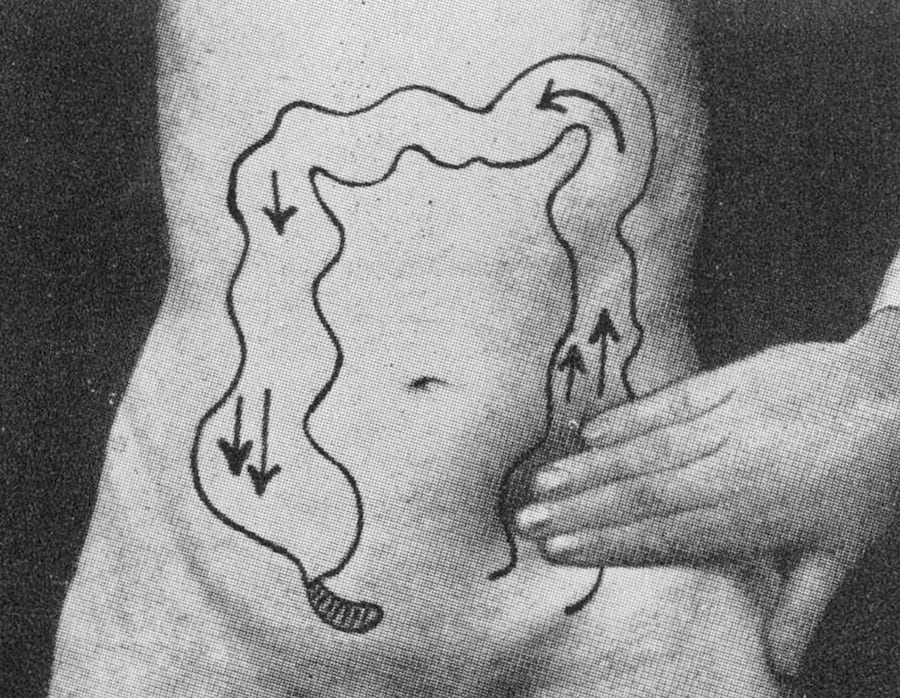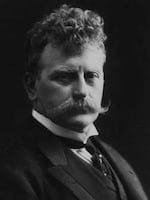Niels Thorkild Rovsing
Niels Thorkild Rovsing (1862 – 1927) was a Danish surgeon
Principle work focused upon general surgery and urology. Eponymously linked with Rovsing sign (1907) to aid in the clinical diagnosis of acute appendicitis. Strong advocate for antisepsis and Listerism, and is a considered a pioneer in his field.
Published over 200 papers and gained international notoriety, particularly for his innovative urological surgery, primarily focused upon horseshoe and polycystic kidneys. In 1918 performed Male to female sex reassignment surgery, according to Rovsing, the first of its kind
Biography
- Born on April 26, 1862 in Flensborg, Denmark
- 1885 – M.D in from the University of Copenhagen, followed by a PHD from the same institution in 1889 entilted ‘About the etiology, pathogenesis and treatment of cystitis’
- 1892-1902 Practiced surgery at the Red Cross Hospital and Queen Louise Children’s Hospital, both in Copenhagen
- 1902 – Professor of Surgery
- 1904 – Director of Surgery at Royal Frederiks Hospital
- 1908 – Founded Danish Surgical Society with Eilert Adam Tscherning (1851-1919)
- 1910 – Campaigned for better surgical accommodation in Copenhagen, leading to opening of Rigshospitalet (University Hospital Copenhagen)
- Honorary member of Edinburgh Medico-Chirurgical Society and the Association of Surgeons of Great Britain and Ireland
- 1920 – Declined position of Prime Minister of Denmark, but accepted position as Minister of Education
- Died on January 14, 1927 from cardiac failure and complications from X-ray therapy for laryngeal cancer,
Medical Eponyms
Rovsing Sign (1907)
The Rovsing sign is described variably in medical literature with most descriptions bearing little/no resemblance to the 1907 description by Rovsing, but rather the description offered by Perman in 1904.
This sign is commonly taught to be attributable to eliciting peritoneal irritation, Rovsing’s original description and intention were quite different. Rovsing originally described the manoeuvre as an attempt to distend the caecum and appendix by applying pressure to the left colon, in an anti-peristaltic fashion.
I press with my right hand onto the fingers of the left hand that is lying flat against the colon descendens [descending colon] and then let the hand glide up toward the splenic flexure…The entire method is based upon isolated rise of pressure within the colon.
Rovsing 1907
In doing this correctly, Rovsing suggests that if pain is elicited, then this isolates the source to the caecum or appendix, and rules out other structures in the right iliac fossa.

2014 – Prosenz et al reviewed 1178 individual studies and found no included study correctly described the method of eliciting Rovsing sign. Of 9 textbooks reviewed, 3 English texts on surgery failed to described the sign accurately, however all 6 German (text)books provided an accurate description.
More eponyms
- Rovsing Operation I (1910) procedure for decortication in polycystic kidney disease
- Rovsing Syndrome (1911) umbilical pain in horseshoe kidney caused by vascular compression, enhanced by dorsal flexion of the lumbar vertebrae
- Rovsing Operation II (1911) to separate a fused horseshoe kidney via division of the renal isthmus
- Male to female sex reassignment surgery (1918) according to Rovsing, the first of its kind
Controversies
1890 Rovsing was dismissed from role as Junior Surgeon at Royal Frederiks Hospital when he married, as he was appointed as an ‘unmarried junior surgeon’. The dismissal received national attention, leading to other doctors striking, and five months later Rovsing was reinstated as a ‘married junior surgeon’.
Major Publications
- Rovsing T. Indirektes Hervorrufen des typischen Schmerzes an McBurney’s Punkt. Ein Beitrag zur diagnostik der Appendicitis und Typhlitis. (Indirect cause of typical pain at McBurney’s point. A contribution to diagnosis of Appendicitis and Caecitis) Zentralblatt für Chirurgie, Leipzig, 1907, 34: 1257-1259. [Rovsing sign]
- Rovsing T. Blasenentzündung und ihre Ätiologie, Pathogenese und Behandlung. (About the aetiology, pathogenesis and treatment of cystitis) Berlin, Germany: Hirschwald; 1890.
- Rovsing T. Klinische und experimentelle Untersuchungen über die infektiösen Krankheiten der Harnorgane. 1898
- Rovsing T. Galdestenssygdommen og dens behandling. Tre prøveforelæ sninger holdte ved konkurrencen om et Professorat i kirurgi ved Københavns universitet. (Gallstone disease and its treatment. Three trial lectures held at the competition for a professor in surgery at the University of Copenhagen. Denmark; 1900.
- Rovsing T. Beitrag zur Symptomatologie, Diagnose und Behandlung der Hufeisenniere [Symptomatology, diagnosis and treatment of horseshoe kidney]. Zeitschrift für Urologie 1911;5: 586-601.
- Rovsing T. Tuberculosis of the kidney. Annals of Surgery 1912;56: 521-43.
- Rovsing T. The treatment of multilocular kidney cystoma (Congenital cystic kidney) by means of multiple punctures. American Journal of Urology 1912;VIII:120-124
- Rovsing T. Abdominal surgery-clinical lectures for students and physicians. Philadelphia, PA: Lippincott. 1914
- Rovsing T. Galdestenssygdommens aarsagsforhold og disses betydning for valget af behandlingen belyst ved experimentelle undersøgelser og tredive aars kliniske erfaringer. 1922
References
Biography
- Torrild J. Danske kirurger-Professor Thorkild Rovsing. Illustreret Tidende. November 27, 1904; 46: 1-2.
- Obituary: Niels Thorkild Rovsing. Br Med J. 1927 Feb 5; 1(3448): 265.
- Hognason K, Swan KG. Niels Thorkild Rovsing: the Surgeon Behind the Sign. Am Surg 2014 12;80(12):1201-1206
- Aagaard OC. Thorkild Rovsing. Dansk Biografisk Leksikon on lex.dk
- Bibliography. Rovsing, Thorkild. WorldCat Identities
Eponymous terms
- Ráf L. Skandinaviska kirurger först med beskrivning av tecken pâ appendicit. [The men behind the syndrome: Emil Perman and Nils Thorkild Rovsing. Scandinavian surgeons were the first to describe signs of appendicitis] Läkartidningen 1984; 81(32-33): 2829-30
- Eponymythology: Appendicitis eponymous signs. LITFL
[cite]


Als Rovsing-Zeichen (nach Niels Thorkild Rovsing, dänischer Chirurg, 1862 bis 1927) bezeichnet man die bei einer Appendizitis („Blinddarmentzündung“) im Bereich des rechten Unterbauchs auslösbaren Schmerzen, die durch das rückwärts gerichtete Ausstreichen des Dickdarms (Colon) gegen den Uhrzeigersinn (zum Wurmfortsatz hin) entstehen. Das Auslösen des Rovsing-Zeichens ist nicht spezifisch für die Appendizitis, ebenso wenig wie die Nicht-Auslösbarkeit eine solche ausschließt. Das Zeichen ist daher nur im Kontext mit anderen klinischen Befunden zu verwerten.
Aufgrund der Gefahr einer Verschlimmerung der Entzündung oder Perforation wird empfohlen, diesen Test nicht mehr durchzuführen.
Perman-Zeichen nach schwedischem Chirurg Emil Perman 1856–1945. Schmerzen rechts Seitenbauch durch Palpation über links fossa illacta 1904.
Perman Zeichen ist OK .